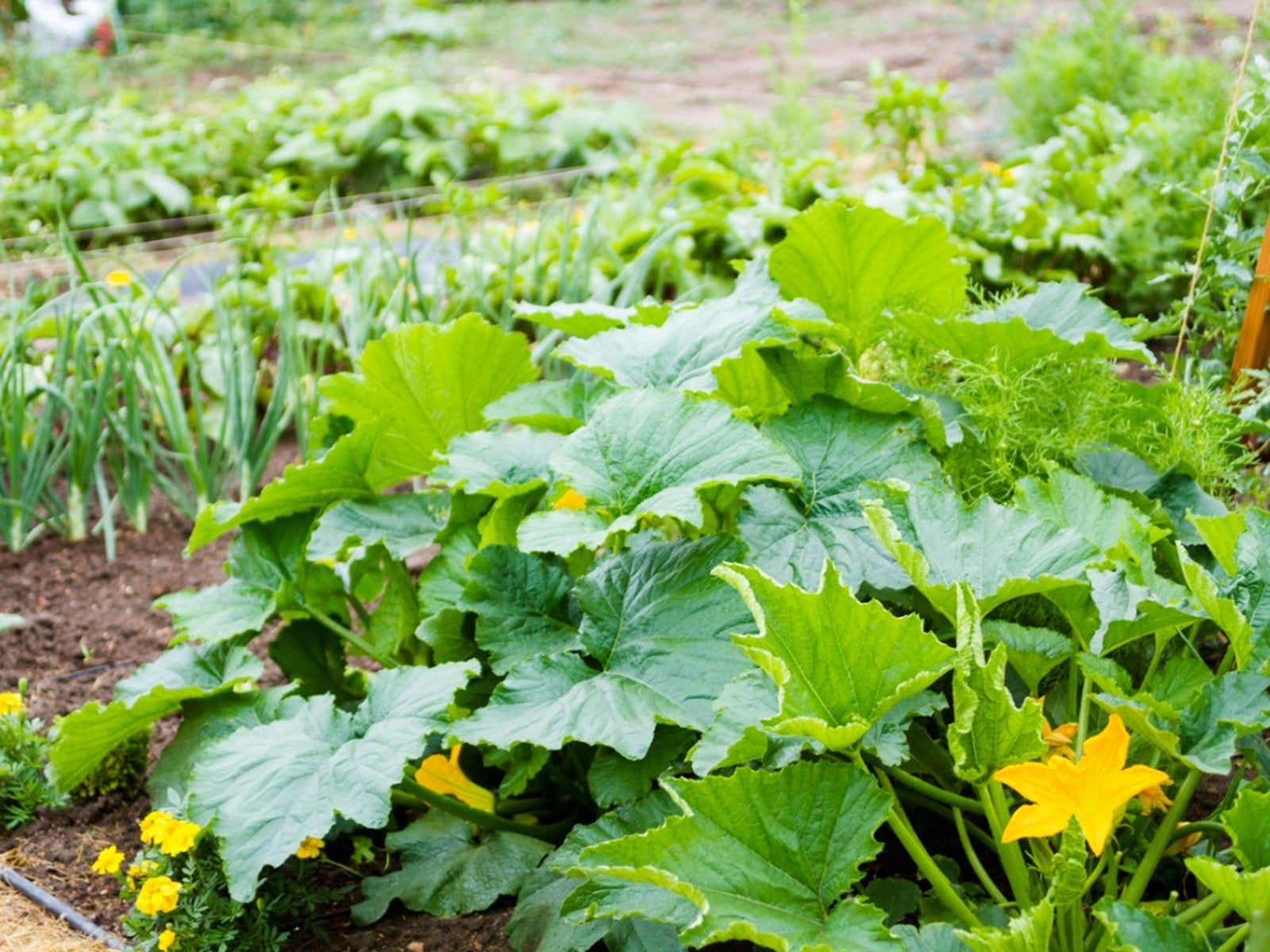Companion Planting Squash In The Garden


Companion planting is a gardening technique used to increase vegetable yields and reduce reliance on pesticides. The Three Sisters method is a time-honored tradition in which corn, beans and squash are planted in close proximity to each other. But corn and beans aren't the only companion plants for squash.
The Three Sisters
Sometimes referred to as intercropping or interplanting, companion gardening brings together plants which can mutually benefit from each other. In the three sisters garden, squash is used to create a living mulch. This deters weeds and helps retain soil moisture levels for all three of the sisters.
Due to its prickly foliage, squash also acts as a deterrent to the deer and raccoons which like to raid the ears of corn. In a three sister's planting, squash also reaps benefits from the other two species. Beans fix nitrogen into the soil and the corn creates dappled sunlight to provide shade from the hot afternoon sun.
Additionally, planting crops of different heights and foliage has been shown to deter invertebrate pests better than a field of all the same plants. Corn and beans provide a visual distraction to common curcubit insects, such as squash bugs. This makes it harder for these pests to locate the squash plants.
Pest Control Benefits of Squash Companion Plants
Many gardeners find invertebrate pests to be one of the primary difficulties with squash cultivation. Not only do these bugs damage squash plants, but some species of pests can also transmit disease. Fragrant flowers and herbs which either deter pests or attract predatory insects also make excellent companions for squash plants. Consider these choices for a squash companion planting:
- Calendula (Attracts pollinators and traps aphids)
- Chives (Deters deer and aphids)
- Dill (Attracts hoverflies and predatory wasps)
- Lemon Balm (Attracts bees and deters gnats)
- Marigolds (Controls nematodes, traps aphids and attracts hoverflies, ladybugs and parasitic wasps)
- Marjoram (Attracts bees and hoverflies)
- Nasturtium (Deters squash bugs, trap aphids and attracts hoverflies)
Intercropping Squash With Other Plants
Although there are many varieties of squash, they fall into two main categories. Summer squash are a bushy-type plant which produces an abundance of soft-skinned fruit early in the season. Zucchini and yellow crookneck are examples of summer squash.
Winter squash not only has a much harder shell and longer storage life, but they also take up much more space in the garden. It's not uncommon for varieties of winter squash to have vines that reach 12 to 20 feet (4-6 m.) in length. Pumpkins are a type of winter squash, as are acorn, butternut and Hubbard.
Gardening tips, videos, info and more delivered right to your inbox!
Sign up for the Gardening Know How newsletter today and receive a free copy of our e-book "How to Grow Delicious Tomatoes".
Both types of squash can be used in companion plantings, but winter varieties are ideal for interplanting with early spring crops. In this model of squash companion planting, fast-maturing veggies are grown in the space reserved for future winter squash vines.
Successive crops of lettuce, peas, radishes and beets can be planted early and reach maturity before the squash vines overtake the area. The early spring crops shade out weed germination and keep the soil moist and loose, while the advancing squash vines provide shade and preserve soil moisture as the spring crops near maturity.

Laura Miller has been gardening all her life. Holding a degree in Biology, Nutrition, and Agriculture, Laura's area of expertise is vegetables, herbs, and all things edible. She lives in Ohio.
-
 Terrifically Tubular Flowers For Hummingbirds: 9 Tube-Flowered Plants To Attract Hummers
Terrifically Tubular Flowers For Hummingbirds: 9 Tube-Flowered Plants To Attract HummersGrowing tubular flowers for hummingbirds helps you create the optimum feeding conditions for your winged friends. Here are nine tubed delights for hummers
By Tonya Barnett
-
 How To Grow Hydroponic Tomatoes For Fresh Indoor Harvests – No Soil Required
How To Grow Hydroponic Tomatoes For Fresh Indoor Harvests – No Soil RequiredLearning how to grow tomatoes in water is easy and allows you to harvest fresh-home-grown produce in every season without any mess.
By Ellen Wells